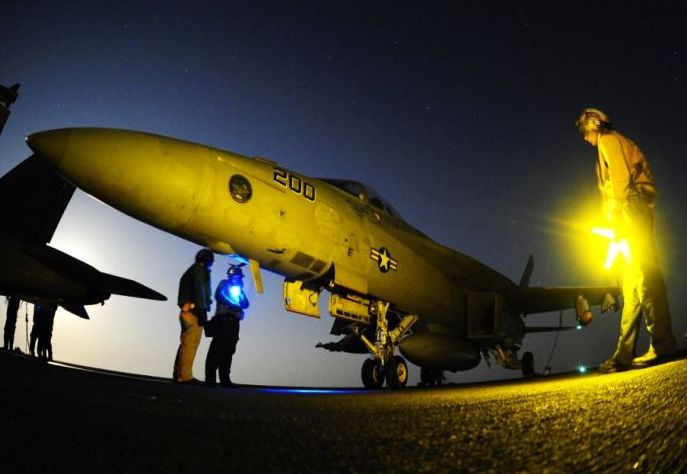|
|
McDonnell Douglas F/A-18 Hornet
|
The F-18, initially known as McDonnell Douglas Model 267, was drastically modified from the YF-17. For carrier operations, the airframe, undercarriage, and arrestor hook were strengthened, folding wings and catapult attachments were added, and the landing gear widened. To meet Navy range and reserves requirements, McDonnell increased fuel capacity by 4,460 pounds (2,020 kg), by enlarging the dorsal spine and adding a 96 gallon fuel tank to each wing. A "snag" was added to the wing's leading edge and stabilators to prevent a flutter discovered in the F-15 stabilator. The wings and stabilators were enlarged, the aft fuselage widened by 4 inches (102 mm), and the engines canted outward at the front. These changes added 10,000 lb (4,540 kg) to the gross weight, bringing it to 37,000 lb (16,800 kg). The YF-17's control system was replaced with a fully digital fly-by-wire system with quadruple-redundancy, the first to be installed in a production fighter.
Originally, it was planned to acquire a total of 780 aircraft of three variants: the single seat F-18A fighter and A-18A attack aircraft, differing only in avionics; and the dual-seat TF-18A, which retained full mission capability of the F-18 with a reduced fuel load. Following improvements in avionics and multifunction displays, and a redesign of stores stations, the A-18A and F-18A were able to be combined into one aircraft. Starting in 1980, the aircraft began to be referred to as the F/A-18A, and the designation was officially announced on 1 April 1984. The TF-18A was redesignated F/A-18B.
• Northrop's F-18L
Northrop developed the F-18L as a potential export aircraft. Since it was not strengthened for carrier service, it was expected to be lighter and better performing, and a strong competitor to the F-16 Fighting Falcon then being offered to American allies. The F-18L's maximum gross weight was 7,700 pounds (3,490 kg) (approximately 30%) lighter than the F/A-18A, via lighter landing gear, lack of wing folding mechanism, reduced part thickness in areas, and lower fuel-carrying capacity. Though the aircraft retained a lightened arresting hook, the most obvious external difference was removed "snags" on the leading edge of the wings and stabilators. It still retained 71% commonality with the F/A-18 by parts weight, and 90% of the high-value systems, including the avionics, radar, and ECM suite, though alternatives were offered. Unlike the F/A-18, the F-18L carried no fuel in its wings and lacked weapons stations on the intakes. It had three underwing pylons on each side instead.
|
|









